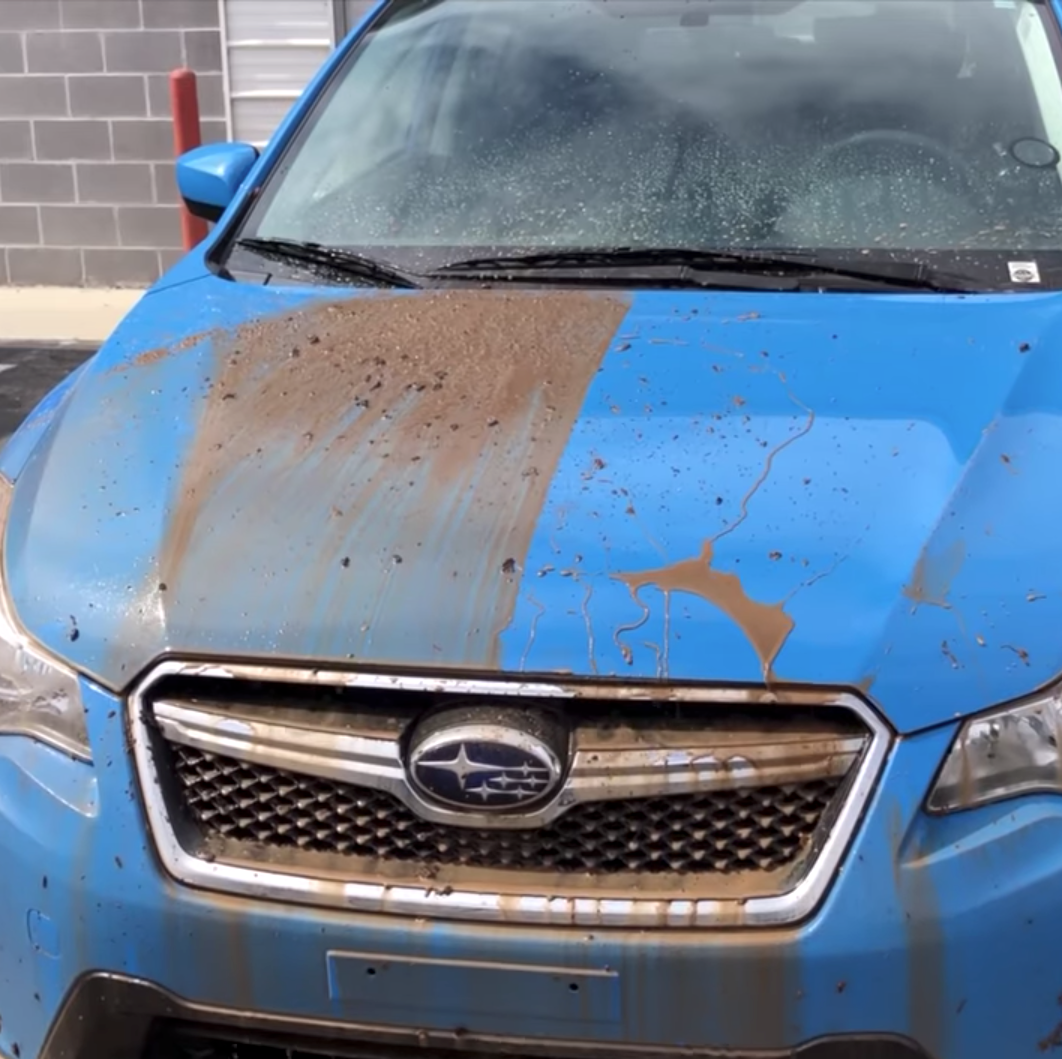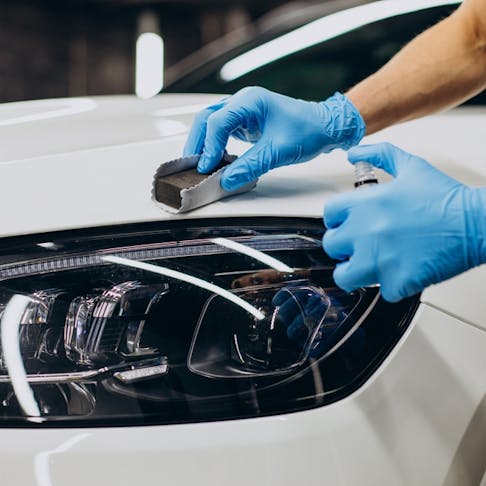Unexpected benefits of getting Ceramic Coating Newark
Wiki Article
Discovering the Science Behind Car Ceramic Coating and Its Safety Characteristics
The scientific research of car ceramic coating offers a remarkable research in advanced automotive protection. Composed mainly of silicon dioxide and polymers, these finishes create a durable bond with car paint. This interaction improves resilience versus environmental hazards while providing hydrophobic advantages. Nevertheless, the complexities of exactly how these finishings work and their long-lasting advantages continue to be less recognized. Unboxing these information discloses why ceramic coverings are becoming a preferred selection for lorry treatmentWhat Is Ceramic Coating?
Ceramic coating is a fluid polymer that chemically bonds to the surface of a lorry's paint. This innovative protective layer enhances toughness and supplies premium resistance to environmental elements. Unlike standard wax or sealers, which offer short-lived protection, ceramic finishes develop a lasting shield that can withstand rough problems such as UV rays, acidic contaminants, and severe climate. When used appropriately, the coating creates a hydrophobic surface area, triggering water to bead and slide off, which helps in maintaining the vehicle's tidiness. Additionally, it supplies enhanced gloss and deepness to the paint, making the lorry show up more polished and dynamic. The application process commonly includes detailed surface preparation, including cleaning and polishing, to ensure peak bonding. Consequently, ceramic layers are becoming increasingly prominent amongst car fanatics and those looking for to shield their financial investments, guaranteeing to keep the lorry's aesthetic allure while decreasing the frequency of upkeep.The Make-up of Ceramic Coatings
The elaborate solution of ceramic finishings primarily includes silicon dioxide (SiO2), which is stemmed from all-natural resources like quartz and sand. This crucial part provides the structure for the coating's sturdiness and protective top qualities. In addition to SiO2, ceramic coverings often consist of different polymers and ingredients that boost attachment, versatility, and resistance to ecological factors. These compounds work synergistically to produce a durable obstacle against pollutants such as dust, chemicals, and UV rays.Furthermore, some solutions incorporate titanium dioxide (TiO2) or various other nanomaterials, which can enhance the coating's hydrophobic buildings, causing enhanced water repellency. The exact composition can vary significantly amongst makers, affecting efficiency and longevity. Ultimately, the mix of these aspects finishes in a protective layer that not just improves the visual charm of cars however likewise offers to extend their life expectancy by shielding the surface area from prospective damages.Just How Ceramic Coatings Work
Comprehending how ceramic finishings function entails discovering their chemical composition, which contributes to their protective high qualities. The application process is crucial for accomplishing suitable outcomes, while longevity and resilience variables identify the coating's efficiency with time. Together, these aspects highlight the advantages and performance of ceramic finishes for automobile security.Chemical Make-up Explained
While lots of car owners look for durable security for their cars, the chemical make-up of ceramic finishes plays an essential role in their effectiveness. These coverings primarily include silicon dioxide (SiO2), which is stemmed from natural minerals. This compound creates a solid bond with the automobile's paint, developing a durable, protective layer. In addition, numerous ceramic layers contain titanium dioxide (TiO2), improving their hydrophobic homes and resistance to UV rays. The existence of polysiloxanes can even more improve flexibility and longevity. With each other, these elements add to the coating's capacity to repel water, dirt, and pollutants, while likewise offering a high-gloss surface. Recognizing this chemical foundation aids car proprietors value the durable defense provided by ceramic finishes.Application Refine Overview
Applying ceramic finishings entails a meticulous process that assures ideal bonding and security for the automobile's surface. Comprehensive cleaning and purification of the car's exterior are performed to get rid of dust, crud, and previous waxes. This action verifies that the surface area is without contaminations that could prevent attachment. Following this, the paint is typically polished to boost quality and eliminate any imperfections. Once prepared, the ceramic coating is used in little areas using an applicator pad, permitting uniform protection. The coating is then left to heal, creating a solid chemical bond with the surface. Appropriate curing times and conditions are essential, as they confirm the coating attains its maximum effectiveness and safety high qualities.Long Life and Toughness Factors
Ceramic coatings are designed to offer long-lasting security through their sophisticated chemical make-up, which develops a durable barrier against environmental pollutants. The toughness of these coatings is influenced by elements such as the thickness of the application, the top quality of the product, and the problems under which the vehicle is exposed. Top notch ceramic finishings can last a number of years, withstanding scrapes, UV rays, and chemical spots. Proper upkeep, consisting of normal cleaning and periodic reapplication, can better enhance longevity. Furthermore, environmental elements like environment and direct exposure to toxins can impact the lifespan of the coating. Generally, when used and preserved properly, ceramic finishes use outstanding durability, making them a prominent option for car lovers seeking to preserve their lorry's appearance.Hydrophobic Characteristics and Water Repellency
Hydrophobic properties are a hallmark of top quality car ceramic coatings, substantially improving the lorry's surface area performance. These coatings produce a molecular bond with the car's paint, causing a surface area that repels water efficiently. When water enters into contact with a ceramic-coated surface, it grains up and rolls off, lessening the amount of liquid that stays on the paint. This behavior not only adds to a cosmetically pleasing appearance yet additionally decreases the buildup of impurities such as dirt, grime, and roadway salts.The boosted water repellency causes easier cleaning and maintenance, as less effort is called for to eliminate unwanted substances. Furthermore, the hydrophobic nature of ceramic coverings helps in preventing water spots, which can mar the surface of uncoated surfaces. Overall, the unification of hydrophobic residential or commercial properties in ceramic coatings plays an essential function in keeping the vehicle's immaculate appearance while simplifying maintenance.use this link
Defense Against Scratches and UV Damage
Car ceramic layers offer substantial security you can look here against scratches and UV damage. The scratch resistance system creates a sturdy layer that absorbs impacts, while the UV protecting benefits assist keep the vehicle's paint integrity in time. Together, these attributes add to a longer-lasting and visually enticing surface.Damage Resistance System
Using sophisticated innovation, ceramic coverings supply a robust guard versus scratches and UV damages, boosting the longevity and appearance of lorry surface areas. The scratch resistance system of these finishings is connected to their special molecular framework, which forms a long lasting bond with the lorry's paint. This bond produces a hard, safety layer that can absorb effects and resist abrasions. Additionally, the smooth surface of the coating decreases friction, making it hard for impurities to adhere and cause scratches. The chemical composition of ceramic coatings commonly includes nanoparticles that reinforce the protective layer, additional improving its durability. Subsequently, vehicles go to my blog treated with ceramic finishings show considerably enhanced scrape resistance contrasted to conventional wax or sealants, guaranteeing an excellent surface with time.UV Protecting Benefits
The safety high qualities of ceramic finishings prolong past scrape resistance to include substantial UV protecting benefits. These coverings create a durable barrier that mirrors damaging ultraviolet rays, safeguarding the lorry's paint and underlying materials. Long term direct exposure to UV radiation can cause fading, oxidation, and degeneration of the paint coating. By incorporating ceramic coatings, car proprietors can efficiently minimize these dangers, preserving the aesthetic appeal and honesty of their cars. Furthermore, the UV blocking properties add to improved durability, minimizing the regularity of repainting and upkeep. Eventually, the assimilation of ceramic finishes provides a complete remedy for safeguarding cars from the destructive effects of sun exposure, making certain a sustained, vibrant look gradually.The Long life and Maintenance of Ceramic Coatings

Frequently Asked Questions
Can Ceramic Coating Be Applied to Any Type Of Sort Of Lorry?
Ceramic coating can be related to various sorts of automobiles, including vehicles, trucks, and motorbikes. Surface area preparation and compatibility with particular materials are important for optimal bond and effectiveness of the coating.Just How Much Does Ceramic Coating Generally Cost?
Ceramic coating typically sets you back in between $500 and $2,000, relying on aspects such as lorry size, coating quality, and specialist application. The investment can provide resilient defense and boost the car's appearance with time.
Is Specialist Application Needed for Finest Results?
The necessity of professional application often relies on preferred results. Experts generally guarantee correct surface area preparation and application techniques, resulting in optimal bonding and longevity of the coating, which might be testing for unskilled individuals to achieve.Can Porcelain Coatings Be Gotten Rid Of or Fixed?
Ceramic layers can be gotten rid of or fixed, though the procedure may require details solvents or techniques - Ceramic Coating Newark. Proper elimination is vital to avoid damage to the underlying surface, highlighting the relevance of professional support for perfect outcomesHow Does Ceramic Coating Contrast to Standard Wax?
The comparison in between ceramic coating and typical wax exposes that ceramic finishings provide exceptional sturdiness, enhanced defense versus environmental impurities, and longer-lasting luster, while wax needs extra regular application and gives less total resistance to damage.Report this wiki page